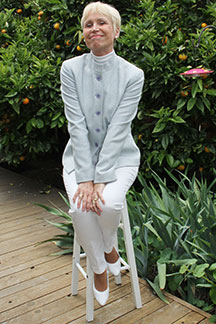Following years of heated debates, the Stadtschloss Berlin reconstruction is ready to start. On June 12, 2013, German President Joachim Gauck laid the foundation stone for the 590 million euro project.
The Stadtschloss Berlin (Berlin City Place) was a royal and imperial palace in the city’s center. Originally built in the 15th century as a fort to guard the crossing of the River Spree, the castle stood on Fishers’ Island, now known as Museum Island. Throughout the intervening centuries its face continued to change until the famous architect Andreas Schlueter finalized its appearance in the middle of the 18th century.
The Stadtschloss Berlin served as the residence to various Electors of Brandenburg and to the Hohenzollern Kings of Prussia. Following the demise of the German Empire in 1918, the palace was turned into a museum. Badly damaged during Allied bombings in World War II, it ended up in the eastern sector of the city. In 1950, East German leaders decided to demolish rather than to repair it. More than a decade later, East Germany built a new Staatsrat building (Council of State) on part of the site and added the Palast der Republik (Palace of the Republic) in the 1970s. When the Palast der Republik, a large modern building, was found to be contaminated with asbestos shortly before German reunification in 1990, it was closed to the public. Following unification the new Federal government of the united Germany demolished the building and left the area a parkland, pending a decision on its ultimate future.
Heated debates arose. Some citizens advocated for the Stadtschloss Berlin reconstruction. Others suggested that the exterior baroque facades be rebuilt, but a modern interior added. Some advocated the retention of the Palast der Republik http://www.walled-in-berlin.com/j-elke-ertle/palace-of-the-republic/ to preserve its historical significance. Others argued for a public park. Lobby groups formed, and finally, after two decades of passionate debates, the Stadtschloss Berlin will return to the heart of Berlin.
A key figure in the debates has been a businessman from Hamburg, Wilhelm von Boddien. He founded and heads the Association Berliner Schloss. Upon project completion in 2019 the Stadtschloss Berlin reconstruction will house a modern museum containing collections of African and other non-European art. http://www.walled-in-berlin.com/j-elke-ertle/berliner-stadtschloss-to-humboldt-forum/
For a sneak peek at the first 20+ pages of my memoir, Walled-In: A West Berlin Girl’s Journey to Freedom, click “Download a free excerpt” on my home page and feel free to follow my blog about anything German: historic or current events, people, places or food.
Walled-In is my story of growing up in Berlin during the Cold War. Juxtaposing the events that engulfed Berlin during the Berlin Blockade, the Berlin Airlift, the Berlin Wall and Kennedy’s Berlin visit with the struggle against my equally insurmountable parental walls, Walled-In is about freedom vs. conformity, conflict vs. harmony, domination vs. submission, loyalty vs. betrayal.















